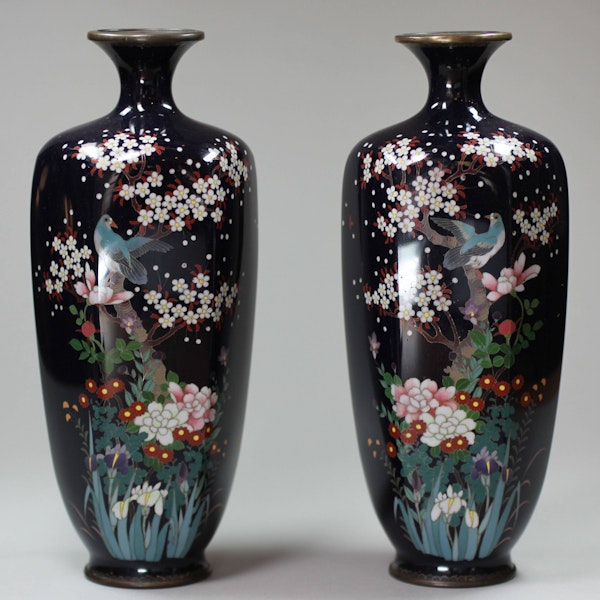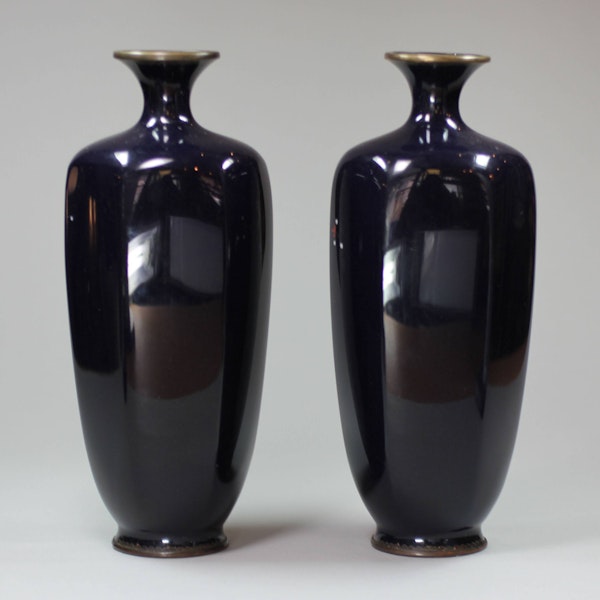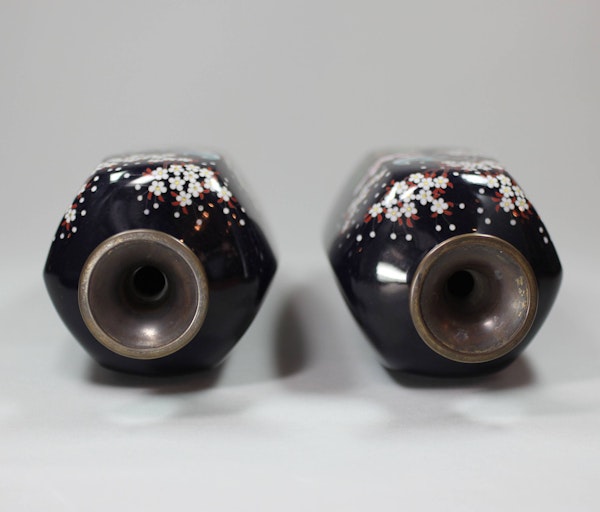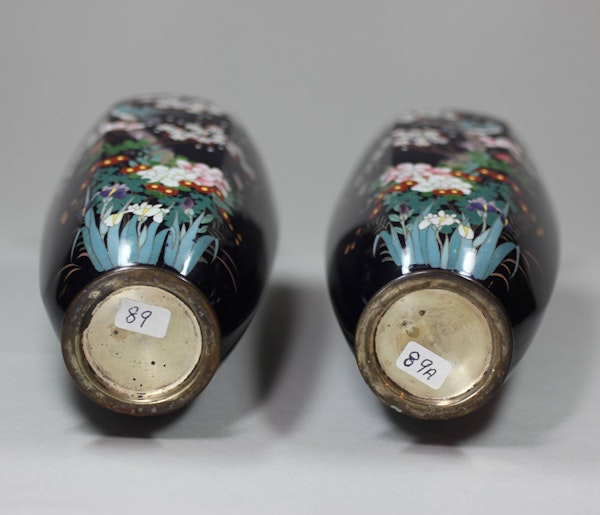A pair of Japanese cloisonné vases, Meiji period
A pair of Japanese cloisonné vases, Meiji period
POA
Description
A pair of Japanese cloisonné vases, Meiji period, each of elongated hexagonal form with tapering foot, flat shoulders and trumpet rim, decorated against a dark ground with an inlaid enamel design featuring a pigeon perched upon a bough of flowering prunus amongst further flowers including magnolia, peony and iris; the rims and feet circled by narrow metal bands.
Condition: Good
Notes:
Cloisonné enamels (from the French ‘cloison’, meaning partition or decorative area) are known in Japan as shippo (七宝), a term also used to refer to the Seven Treasures of Buddhism. Though the list differs from text to text, these treasures are generally thought to include gold, silver, pearl, agate, crystal, coral and lapis lazuli. The jewel-like colours of early cloisonné enamels imported from Ming China fascinated Japanese craftsmen and by the 19th century Nagoya, Kyoto and Tokyo had become centres of innovation and production of exceedingly high quality Japanese cloisonné wares. These wares were very popular in Europe, and many superb examples were exhibited at the great ‘World Fairs’, including the Vienna Exhibition of 1873 at which the Nagoya Cloisonné Company won first prize. The period at the turn of the century, during which this pair was made, is commonly recognised as the peak of aesthetic and technical sophistication within cloisonné production.
| item details | |
|---|---|
| Material and Technique | Cloisonné; inlaid enamel with silver wire |
| Origin | Japanese |
| Period | 19th Century |
| Condition | Excellent |
| Dimensions | Height: 18.5cm. (7 1/4in.) |
Product REF: Y221








